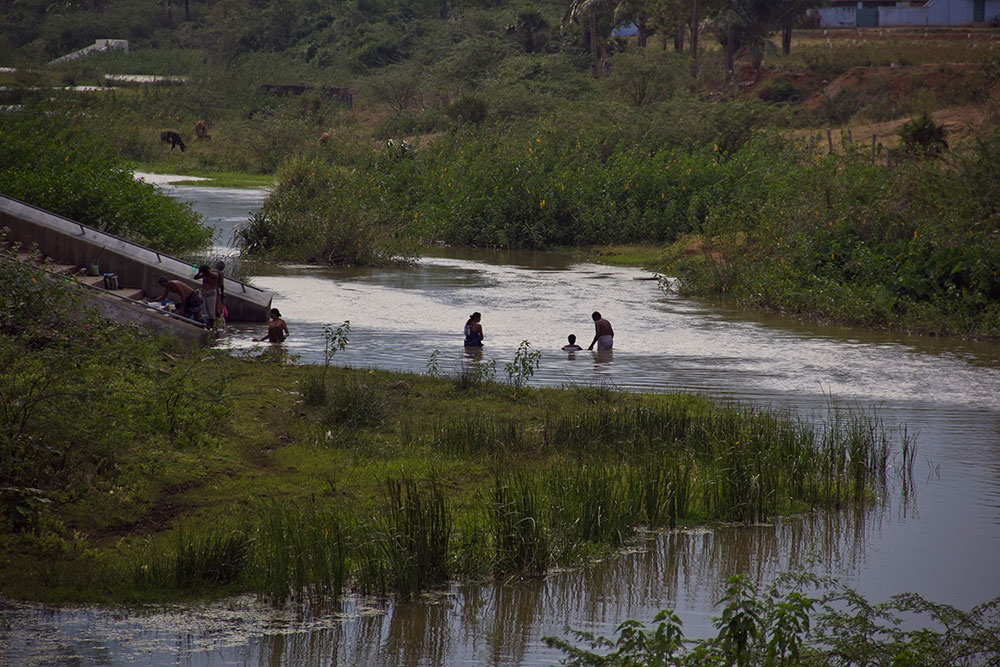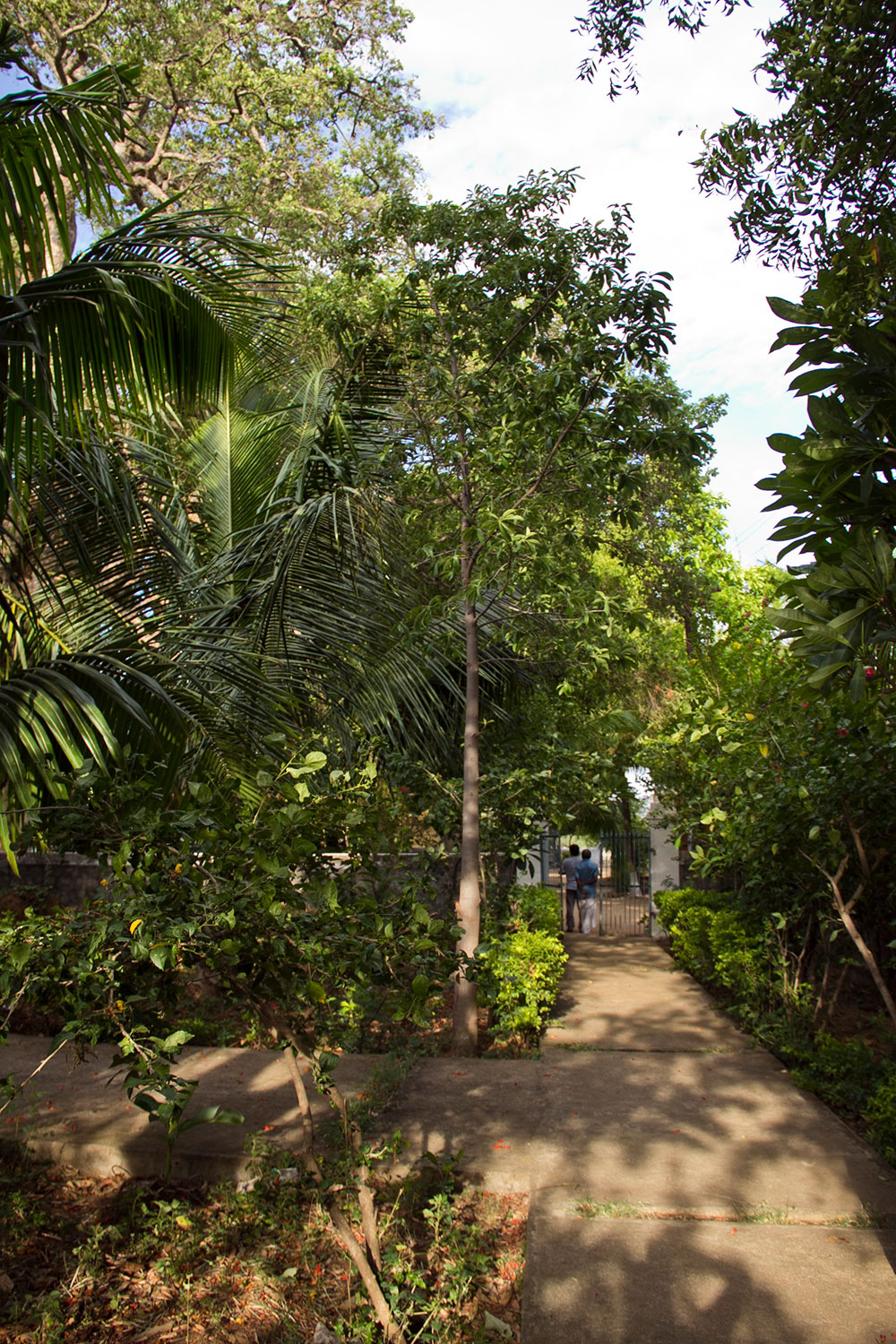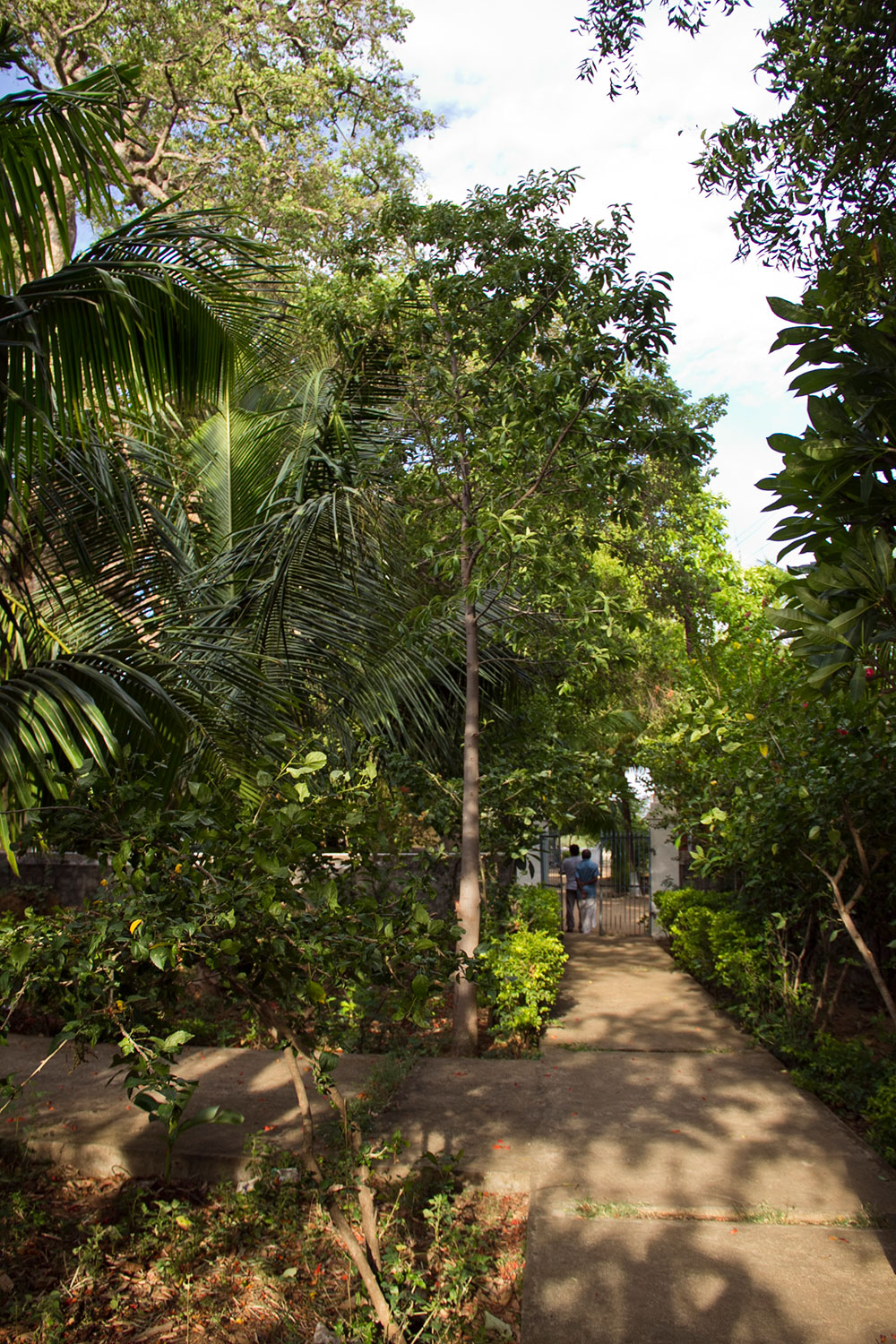
Between the temple and the river is a small patch of an old garden, cool and quiet. Some visitors sat around while a few napped. The garden is as old, if not older, than the temple, says Ganapathy, the 73-year-old gardener of this temple in Sivasailam village, about 40 kilometres from the town of Tirunelveli in Tamil Nadu. Such traditional temple gardens, called Nandavanam, are strewn along the banks of the river Tamaraparani that originates in the Western Ghats. Each is attached to one of the 150-odd temples in the region, some as old as 1,000 years.

A Saravanan and M Mathivanan, research associates with the Bengaluru-based Ashoka Trust for Research in Ecology and Environment, a scientific research organisation, have been investigating the history and ecological significance of the Nandavanams in Tirunelveli and Tuticorin districts.
“These are similar to sacred groves in the rest of India,” said Saravanan. “Traditionally such gardens and forests, which surrounded the temple, would hold trees and plants that would be beneficial to the temple. For instance, they would provide oil to the lamps, medicines, fruits and flowers for worship.” While traditionally sacred groves existed before a temple did, Nandavanams were built around a temple. But functionally, they were similar.

In their study of the ecological value of 61 temples, they found 135 species of shrubs and trees such as mahua, bael, neem, arjuna, jackfruit, Indian sandalwood, palash. In terms of biodiversity, they observed 51 bird species, 16 butterfly species and four mammals.
“These gardens have a healthy population of native trees and they attract frugivores and small mammals,” said Mathivanan. “At least, it is not bougainvillea.”

Network of patches
The Sivasailam nandavanam is fenced in by layers of very different landscapes – first by large flat paddy lands that are ringed in by distant mountains of the Western Ghats. Through the thick tree trunks in the garden, you can see the bright green unbroken horizon of the agricultural fields. These temple complexes and their forests serve as little green havens within the emerald landscape of rice fields.
Sacred groves form a network of informally protected sites, much like a join-the-dots game. “Even though individually they may be very small to support a lot of biodiversity, collectively they provide a range of different habitats for a range of different species,” said Shonil Bhagwat, lecturer, faculty of science, Open University in the UK. Bhagwat has been studying sacred forests in the Western Ghats for more than 15 years and is particularly interested in people's interaction with their natural environment in an increasingly human-dominated world.
Owing to their relatively longer history of formal protection of forests, sacred groves host unique assemblages of biodiversity – species and genes – that are not found elsewhere, kind of like a repository.
“It is difficult to imagine being able to conserve all of India's biodiversity in formal protected areas, which cover less than 5% of our geographic area,” said Anand Osuri, a PhD student at the National Centre for Biological Sciences. “It is important that we understand and utilise the potential of areas outside protected areas to conserve biodiversity. Although small and often fragmented, these networks can provide resources such as fruiting trees or nesting sites, as well as act as stepping stones for wildlife across human-used landscapes.” Osuri works primarily in the moist evergreen forests and forest fragments in Kodagu, Karnataka.
Changes in temple landscapes
Vignesh, the Sivasailam temple priest, talks about the history of the temple and its Nandavanam. He is standing in the exquisitely carved sanctum sanctorum of the temple. His torso and the stone walls glisten in the heat and light of the oil lamps. His voice bounces off the walls as he speaks.

“This temple goes back 1,800 years,” said Vignesh. “There are stories about Pandian kings visiting this place. The Nandavanam has always existed and has held libraries of medicinal plants. Priests, historically, have brought medicinal plants from the hills and planted them here. Each plant in the garden had a role, whether to ease a fever or to clean the air.” He walks over to point out a Thiruvodu tree, which produces a very large fruit whose dried husk forms a perfect bowl. “These were used by sanyasis to ask for alms.”
Sacred forests or Nandavanams are not immune to anthropogenic pressures. Cultural and social changes around these religious sites have altered the landscapes. Atree scholars found that 20% of the temples hardly had a Nandavanam any longer.
“Several have changed the constitution of the gardens to move to ornamental gardens or planting commercial trees such as coconut or banana, which have very little ecological value,” said Saravanan. “Many temples quote manpower, maintenance and water issues.”
An increasing focus on the “temple structure”, however, is what has been hurting the health of sacred forests. Several scientists, including Bhagwat, have observed that in many places in India, local folk deities have been, and continue to be, replaced with Hindu deities (a process referred to as “Sanskritisation”). This has resulted in the removal of trees to construct temples/concrete structures in sacred groves.
The move has been towards more paving, flooring and concrete. Ganapathy, the temple gardener, says the concretisation started 20 years back. “Pilgrims want everything neat and clean,” said Saravanan. “Paving keeps things mud-free.” The size and the grandeur of a temple are considered directly proportional to its popularity and prosperity.
Rajasri Rai, a postdoc researcher with the Centre for Ecological Sciences at the Indian Institute of Science, added, “Once you develop the temple, the focus is on the temple and on the puja. Other systems lose sacred importance. All attention is on the temple. Local people see it differently. For them unless they build a temple, they are not getting a certain social status. Big temples get people to visit. It increases social and economic stature.”
But Vignesh wants to get his temple’s Nandavanam to resemble its earlier years.
Reforesting the lost
“These gardens were not planned randomly. There was an architecture to it and we are trying to get that back,” said Vignesh. One of the steps has been to grow a Nakshatra garden (astrological signs have certain species of tree associated with them), which he feels is a start, at least to get people interested in trees.
Some of these old surviving forest patches are invaluable when it comes to shining a light on what a forest might have been like in the area several thousand years ago, like a relic to an ancient civilisation. Considering the Indian government’s rapid march towards creating new forests to combat deforestation, sacred groves, their histories and regeneration can be a blueprint to such plans. “In short, one could say sacred groves provide a small window into an ecosystem’s past,” said Osuri. “They might even provide a source population and a reference library.”
Bhagwat’s research, in fact, shows how the protection and conservation of medicinal plants in sacred groves have been superior in comparison with those in state-managed forests. “The reason is that people have control over them so they may well have encouraged regeneration of some chosen plants in sacred groves historically. In state forests, people have no access to what is within, so there is no incentive to promote regeneration of medicinal plants. What we have in sacred groves is a landscape that is nurtured by people, for people. State forests, on the contrary, are somewhat exclusionary.”
Though sacred groves can be considered popularly as blueprints of bygone ecosystems, Bhagwat’s recent research shows that some of them may well have “emerged” on treeless land rather than “remained” as vestiges of old forest. But either way, both in their old ways and modern plans, these forest areas evince hope. Bhagwat’s long-term view suggests that these groves may well be at the helm of forest regeneration.
“I think they can provide a good ‘model’ for forest management because at the heart of sacred grove conservation there is a cultural sensitivity,” he said. “That such sensitivity is important to promote conservation because ultimately it is the local people who will (or will not) help conservation of forests. The sacred grove concept can bring a much-needed cultural understanding in forest management and planning.”










